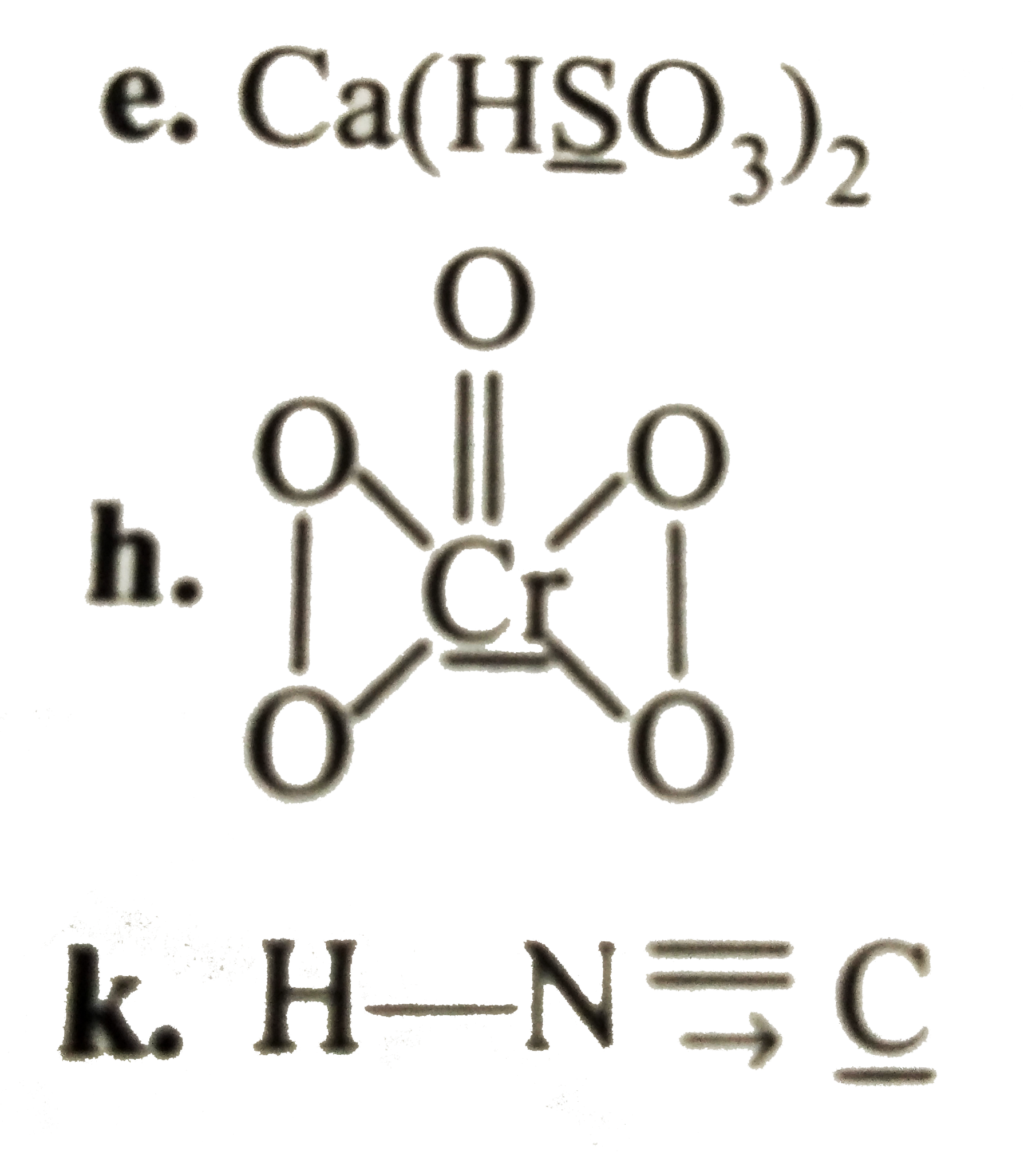What are the oxidation number of the underlined elements in each of the following and how do you rationalise your results?
a.KI–3 b. H2S––4O6 c. Fe–––3O4
d. C––H3C––H2OH
e. C––H3C––OOH
In KI3, since the oxidation numbers of K is +1, therefore, the average oxidation number of iodine =−1/3. But the oxidation number cannot be fractional. Therefore, we must consider its structure, K+[I−I←I]Θ. Here a coordinate bond is formed between I2 molecule and IΘ ion. The oxidation number of two iodine atoms forming the I2 molecule is zero while that of iodine forming the coordinate bond is −1.
b. By conventional method:
+1H2xS4−2O6or2(+1)+4x+6(−2)=0
x=+2.5 (wrong).
But it is wrong beacuse all the four S atoms cannot be in the same oxidation state. By chemical bonding method, the structure of H2S4O6 is shown below:
H−O+5−O∣∣S∣∣O−0S−0S+5−O∣∣S∣∣O−OH
The oxidation number of each of the S atoms linked with each other in the middle is zero while that of each of the remaining two S atoms is +5.
c. By conventional method.
xFe3−2O4 or 3x+4(−2)=0
or x=8/3
By stoichiometry Fe3O4≡+2Fe−2O.+3Fe2−2O3
Fe has oxidation number of +2 and +3.
d. By conventional method.
CH3CH2OH=xC2+1H4−2O or 2x+6(+1)+1(−2)=0
or x=−2
By chemical bonding
C2 is attached to three H atoms (less electronegative than carbon)
H2−H∣C∣H1−H∣C∣H−OH
and one CH2OH group (more electronegative than carbon).
Therefore, oxidation number of C3=3(+1)−x+1(−1)=0
or x=−2
C1 is, however, attached to one OH (oxidation number −1) and one CH3 (oxidation number =+1)
of C1=+1+2(+1)+x+1(−1)=0 group,
∴ Oxidation number of C1=+1+2(+1)+x+1(−1)=0
x=−2
e. By conventional method:
CH3COOH=xC2+1H4−2O2or2x+4−4=0
or x=0
By chemical bonding method:
C2 is attached to three H atoms (less electronegative then carbon)
H2−H∣C∣H1−O∣∣C−OH
and one −COOH group (more electronegative tan carbon.
Therefore, oxidation number of C2=3(+1)+x+1(−1)=0
or x=−2
C1 is, however, attached to one oxygen atom by a double bond, one OH (oxidation number =−1) and one CH3 (oxidation number =+1) group.
Therefore, oxidation number of C1=+1+x+1(−2)+1(−1)=0
or x=+2
Related Playlists
- BOOK - CENGAGE CHEMISTRYCHAPTER - NCERT BASED EXERCISEEXERCISE - Atomic Structure94videos
NCERT BASED EXERCISE
- BOOK - CENGAGE CHEMISTRYCHAPTER - NCERT BASED EXERCISEEXERCISE - Thermodynamics50videos
NCERT BASED EXERCISE
- BOOK - CENGAGE CHEMISTRYCHAPTER - NCERT BASED EXERCISEEXERCISE - Chemical Equilibrium72videos
NCERT BASED EXERCISE
- BOOK - CENGAGE CHEMISTRYCHAPTER - ISOMERISMEXERCISE - Assertion-Reasoning Type1videos
ISOMERISM
- BOOK - CENGAGE CHEMISTRYCHAPTER - ORGANIC REACTION MECHANISMEXERCISE - Analytical and Descriptive6videos
ORGANIC REACTION MECHANISM
Similar Questions
What are th oxidation number of the underlined elements in each of the following and how do you rationalize your results ?
(a) KI3(b)H2S4O6(c)Fe3O4(d)CH3CH2OH(e)CH3COOHView SolutionWhat are the oxidation numbers of the underlined elements in each of the following and how do you rationalize your result?
(a) KI3
(b) H2S4O6
(c)Fe3O4
(d) CH3CH2OH
(e)CH3COOHView SolutionAssign oxidation number to the underlined elements in each of the following species:
a.NaH2PO4
b. NaHS––O4
c. H4P2–––O7
d. K2Mn––––O4
e. Ca–––O2
f. NaB––H4
g. H2S2–––O7
h. KAl(S––O4)2.12H2OView SolutionDetermine the oxidation number of the underlined atom is (NH4)6Mo7–––––O24
View SolutionCalculate the oxidation number of underlined elements in following compounds:
(i) CaO––2 (ii) H2S––2O7 (iii) K2Mn––––O4 (iv) KI–3View SolutionIndicate the oxidation number of underlined, Ba(H2P––O2)2
View SolutionWhat is the oxidation number of the underlined atoms in the following ?
KMn––––O4,Na2Cr–––2O7,Fe–––3O4,KCl–––O3,P––O3−4C––Cl4View SolutionCalculate the oxidation number of the underlines elements:
a. P––H3 , b. M–––gO , c. HN––O3 , d. H3P––O4View SolutionWhat is the oxidation number of the underlined elements?
a. H2S–– , b. H2S––O4 c. NaS2–––O
d. Na2S4–––O6 e. Ca(HS––O3)2 f. H2S2–––O8
g. H2S––O5 , h. , i. N––H4N––O3 , j. H−C––≡N , k. H−N=−−→C–– , l. HN––O4View Solution
, i. N––H4N––O3 , j. H−C––≡N , k. H−N=−−→C–– , l. HN––O4View SolutionCalculate the oxidation state of the underlined atoms in the given species.
(e ) F––e2O3View Solution


